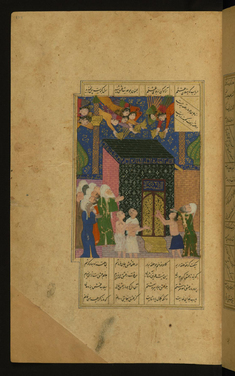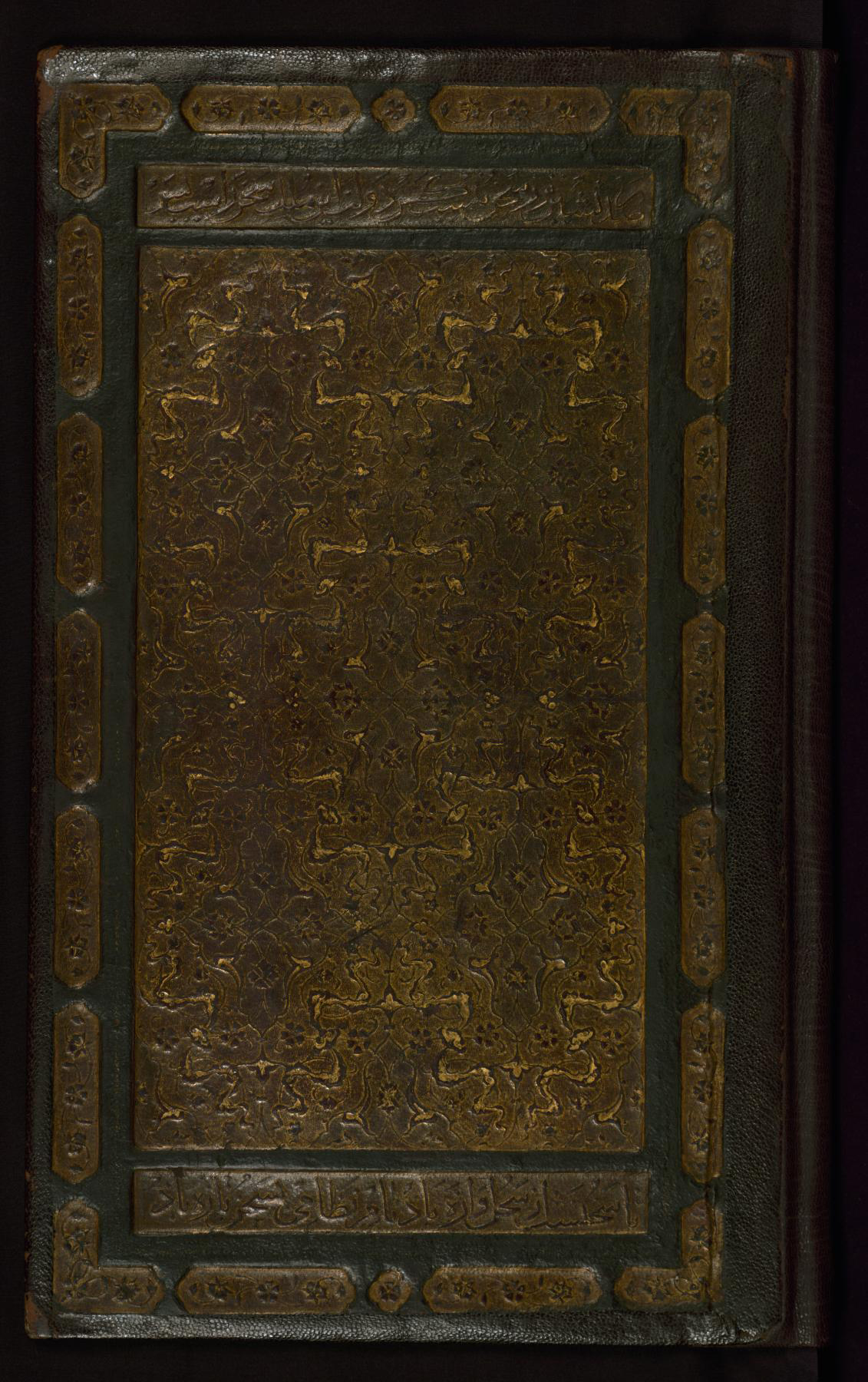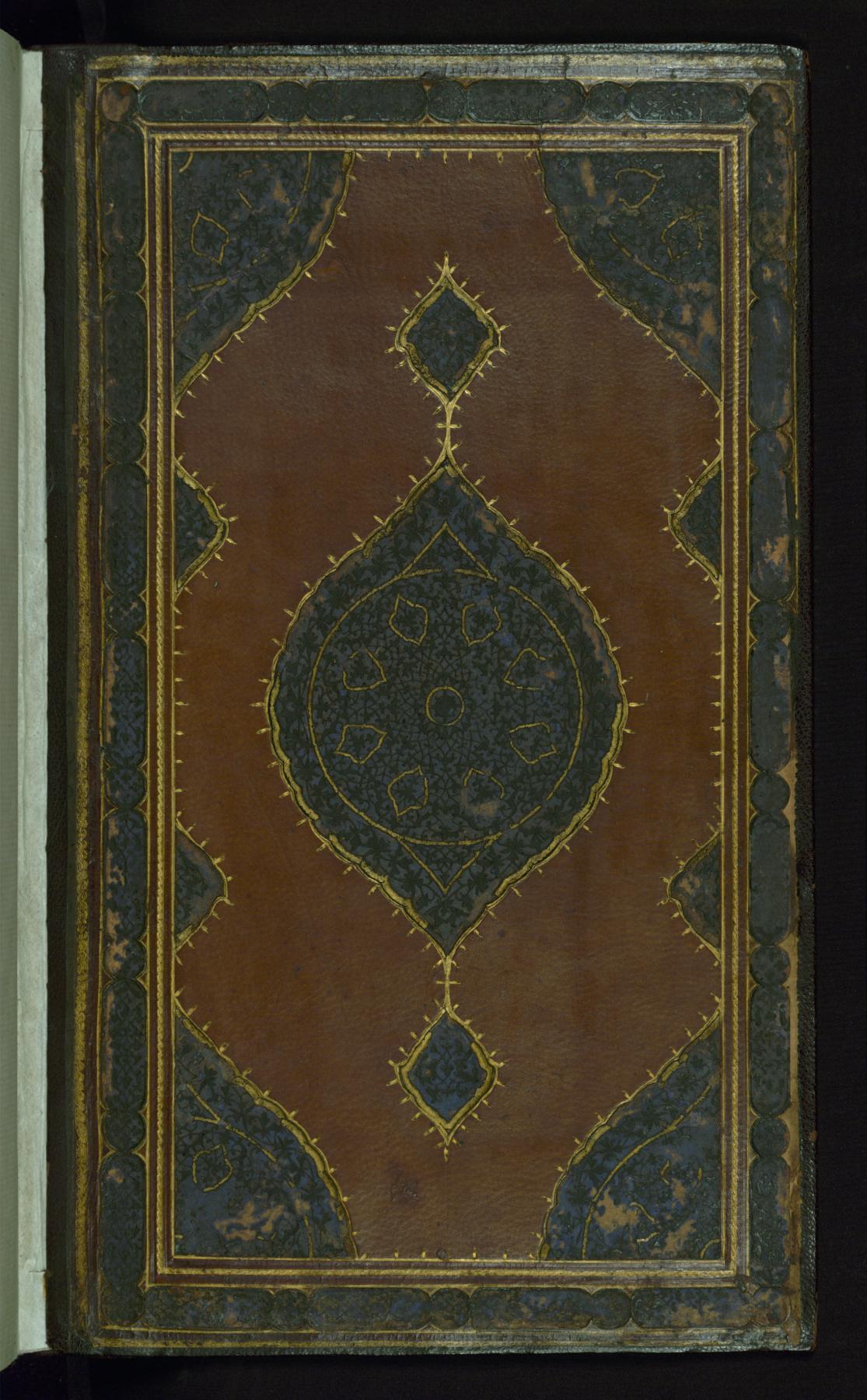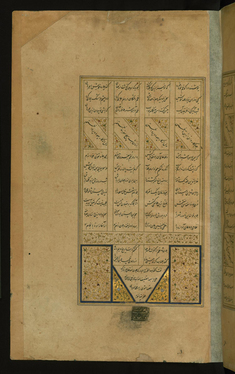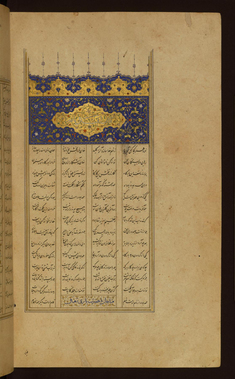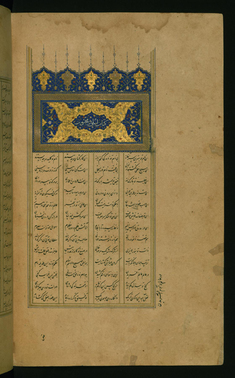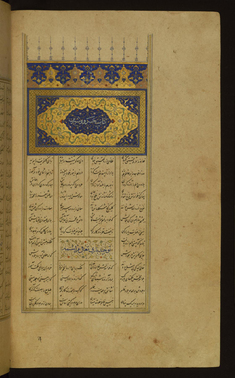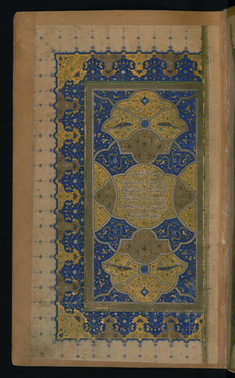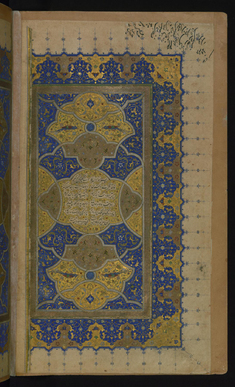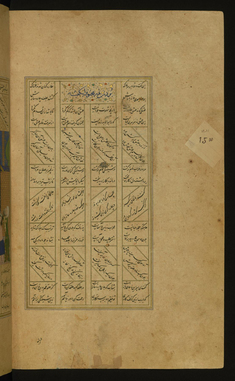Five Poems (Quintet)
(Islamic World , Islamic Manuscripts, Manuscripts and Rare Books)
This illuminated and illustrated copy of the Khamsah (quintet) of Nizami Ganjavi (died 605 AH/AD 1209), Walters manuscript W.609, was written by Yar Muhammad al-Haravi in 922 AH/AD 1516. Written in 4 columns in black Nasta'liq script, this manuscript opens with a double-page illuminated frontispiece signed by 'Abd al-Wahhab ibn 'Abd al-Fattah ibn 'Ali. It contains 35 illustrations that were repainted in India during the 12th century AH/AD 18th. The seal of Muhammad Asharf ibn Muhammad Khatam al-Husayni, dated 1173 AH/AD 1759-1760 appears on fols. 1a and 401a. It is possible that the brown leather binding with center and side panels brushed with gold is original to the manuscript but was repaired at a later stage in the codex's history.
Provenance
Provenance (from the French provenir, 'to come from/forth') is the chronology of the ownership, custody, or location of a historical object. Learn more about provenance at the Walters.
Muhammad Asharf ibn Muhammad Khatam al-Husayni, 1173 AH/AD 1759-1760 [date and mode of acquisition unknown] [seal impression on fols. 1a and 401a]; Husayn …[?], 1308 AH/AD 1890-1891 [date and mode of acquisition unknown] [ownership statement on fol. 1b]; Henry Walters, Baltimore [date and mode of acquisition unknown]; Walters Art Museum, 1931, by bequest.
Exhibitions
| 2012 | Paradise Imagined: Images of the Garden in the Islamic and Christian World. The Walters Art Museum, Baltimore. |
| 1997 | The Divine Word and Sacred Sites of Islam. The Walters Art Gallery, Baltimore. |
Geographies
Afghanistan (Place of Origin)
Measurements
Folio H: 11 7/16 x W: 6 7/8 in. (29 x 17.5 cm)
Credit Line
Acquired by Henry Walters
Location in Museum
Not on view
Accession Number
In libraries, galleries, museums, and archives, an accession number is a unique identifier assigned to each object in the collection.
In libraries, galleries, museums, and archives, an accession number is a unique identifier assigned to each object in the collection.
W.609
Do you have additional information?
Related Objects

Alexander the Great Watching the Sirens Bathing
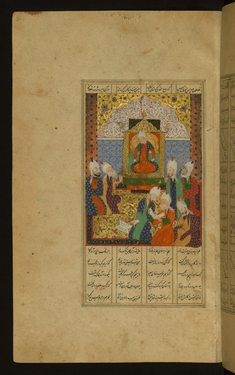
Alexander the Great and the Seven Philosophers, Including Aristotle, Socrates, and Plato
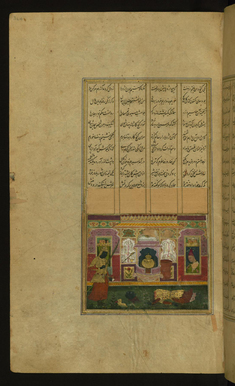
An Ethiopian Warrior Killing Another Ethiopian
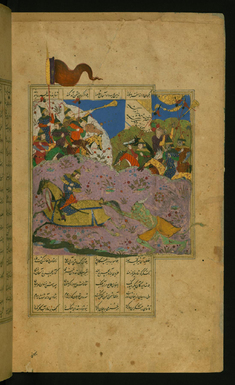
Alexander the Great Fighting the Russian Warriors
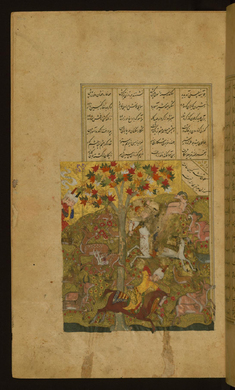
Alexander the Great Hunting Deer

Alexander the Great Admiring his Portrait Ordered by Nushabah
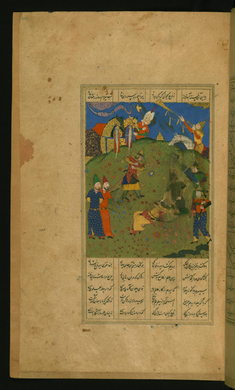
The Death of King Darius

Alexandar the Great Fighting the Ethiopians
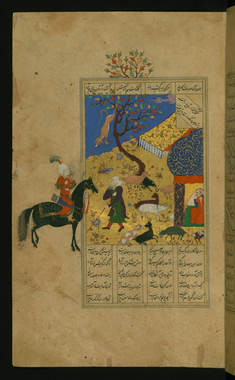
Bahram Gur Meeting a Shepherd who Hung his Dog on a Tree
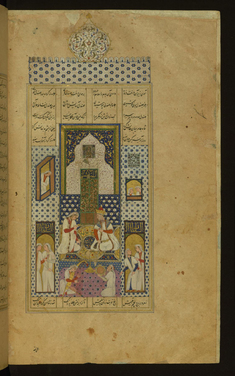
Bahram Gur in the White Pavilion

Bahram Gur in the Sandalwood Pavilion
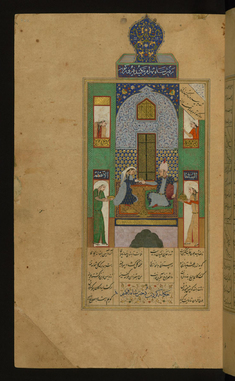
Bahram Gur in the Blue Pavilion

Bahram Gur in the Red Pavilion
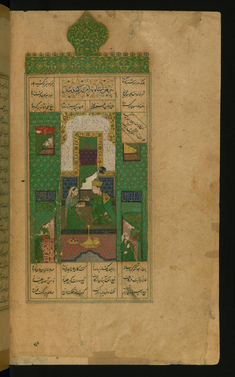
Bahram Gur in the Green Pavilion
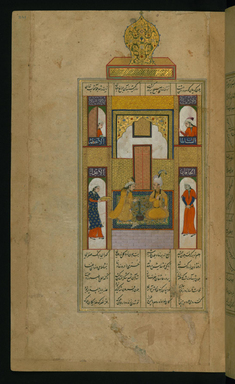
Bahram Gur in the Yellow Pavilion

Bahram Gur and the Indian Princess

Bahram Gur Killing a Lion and a Wild Ass

Fitnah Carrying the Ox Upstairs to Bahram Gur

Bahram Gur Killing Two Lions

Laylá and Majnun Fainting at the Sight of Each Other

Majnun Playing with Wild Animals
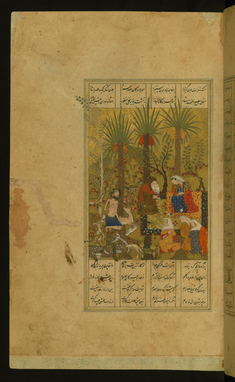
Laylá and Majnun Meeting in the Palm Grove
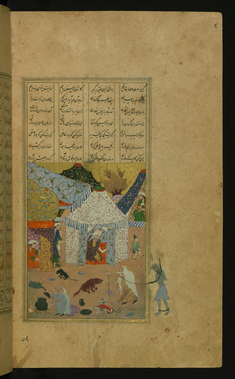
Majnun, in Chains, is Led by the Old Woman to Laylá's Tent
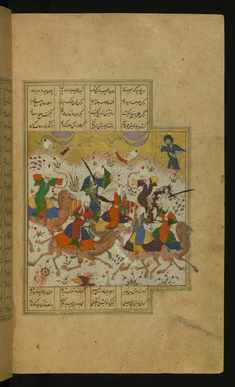
Nawfal Fighting with Laylá’s Tribe
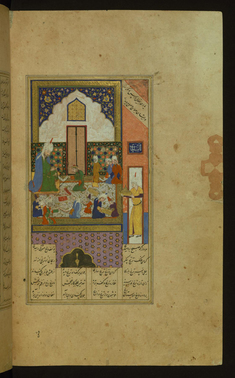
Laylá and Majnun at School

Shirin on Horseback Watches Farhad
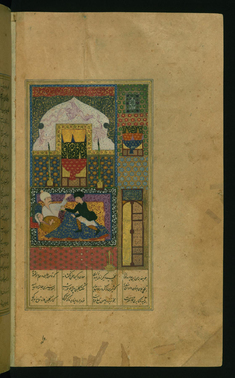
Shiruyah Stabbing his Father, Khusraw
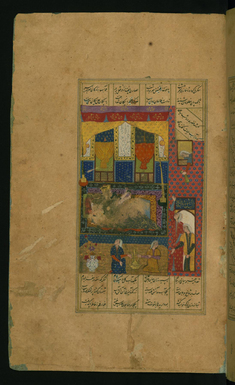
Khusraw and Shirin in their Wedding Chamber

Khusraw Arriving at Shirin's Palace

Khusraw Fends Off an Attacking Lion

Khusraw Watching Shirin Bathing
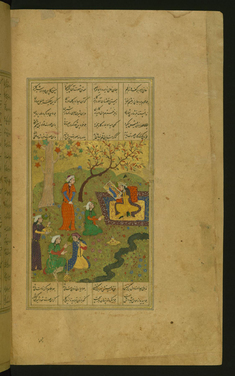
Shirin Admiring the Portrait of Khusraw
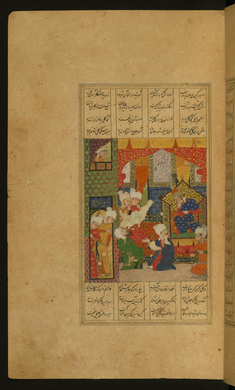
Two Scholars Quarreling
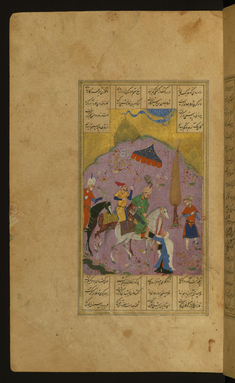
Sultan Sanjar and the Old Woman
